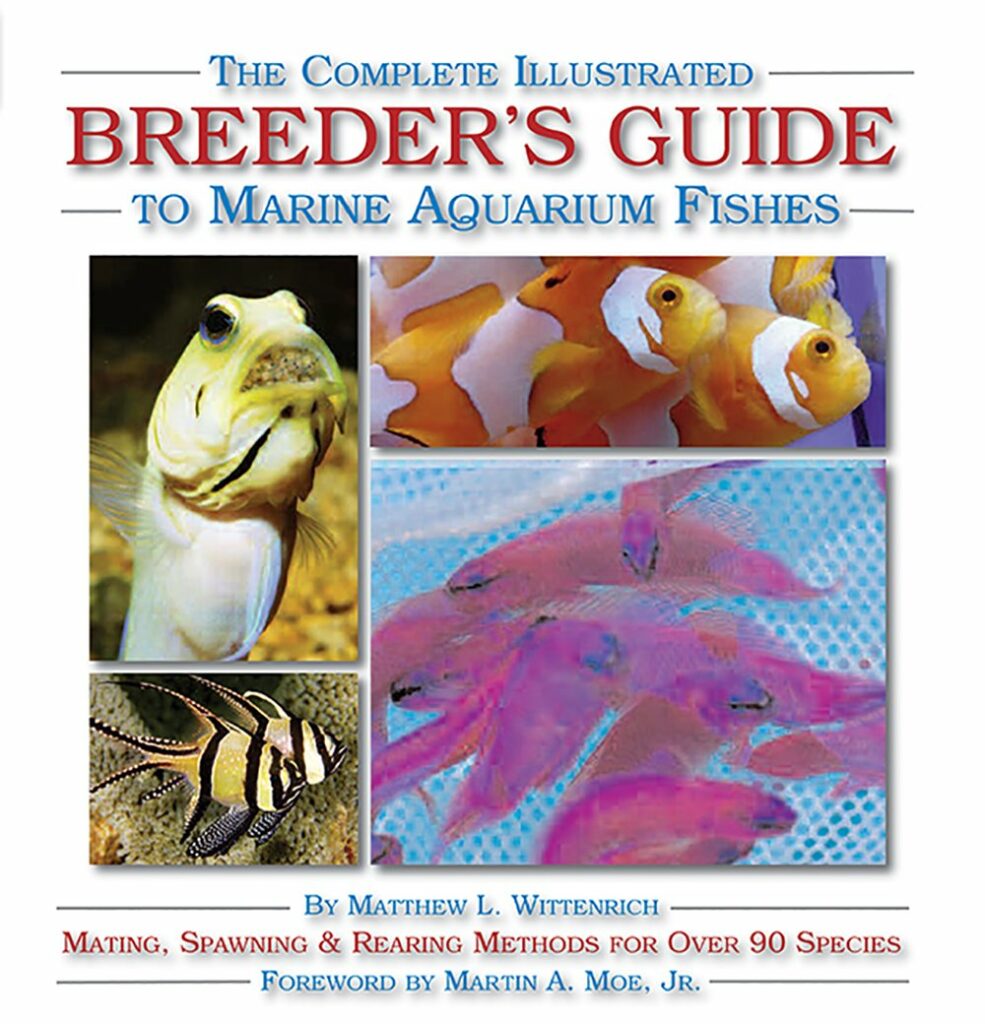lf you’ve been reading the November/December 2021 issue of CORAL Magazine, you’re probably aware that many of the fangblenny species are ever more frequently available as captive-bred offerings. These “domesticated” Meiacanthus species tend to fare far better than wild-caught specimens. But what if you get the itch to take your fishkeeping to the next level?
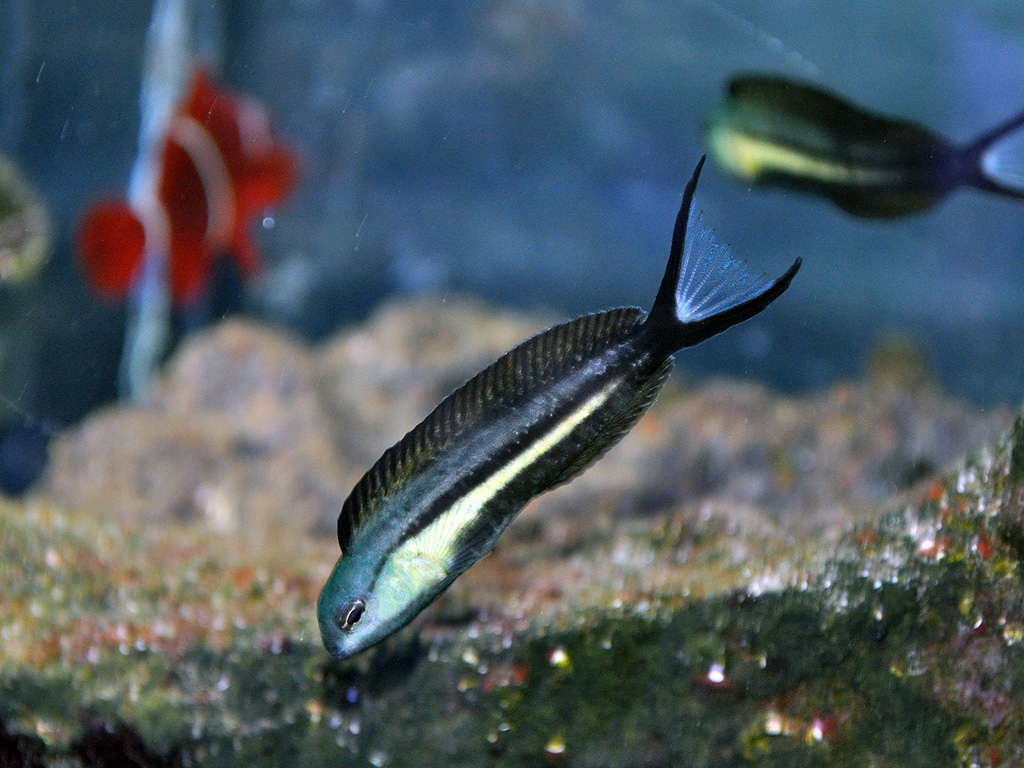
While many aquarists focus on Banggai Cardinalfish (Pterapogon kaudernii) or clownfishes as the ideal first marine fish breeding project, Dr. Matthew L. Wittenrich, author of The Complete Illustrated Breeder’s Guide to Marine Aquarium Fishes, has in the past suggested that the Meiacanthus spp. are far superior first-breeding candidates that will get new breeders out of the clownfish rut. Why?
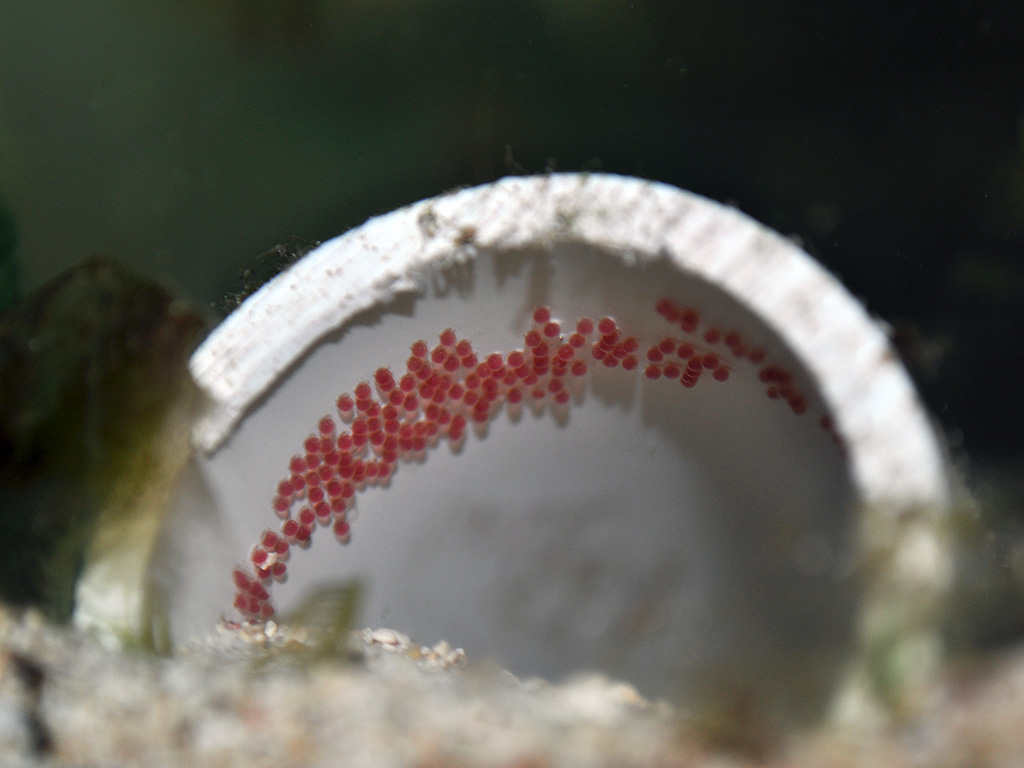
Several fang blenny species are inexpensive to obtain in groups. They can be brought into spawning condition quite quickly (compared to potentially raising a clownfish pair for a few years). They also produce spawns rather frequently, especially if maintained in a group breeding setting.
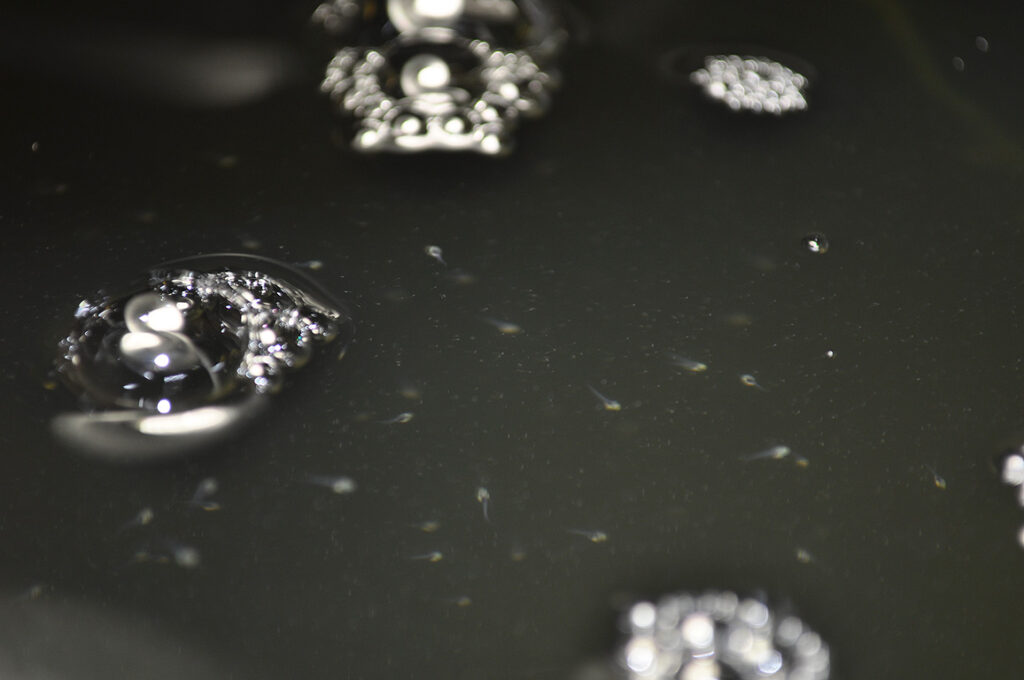
Finally, the fang blennies generally have easily-reared offspring that will better train marine fish breeders to work with more challenging larviculture projects. What you learn breeding clownfish or Banggai Cardinalfish really only helps you refine your techniques within those groups, while working with fang blenny larvae can help you grow outwards and upwards as a marine aquaculturist.
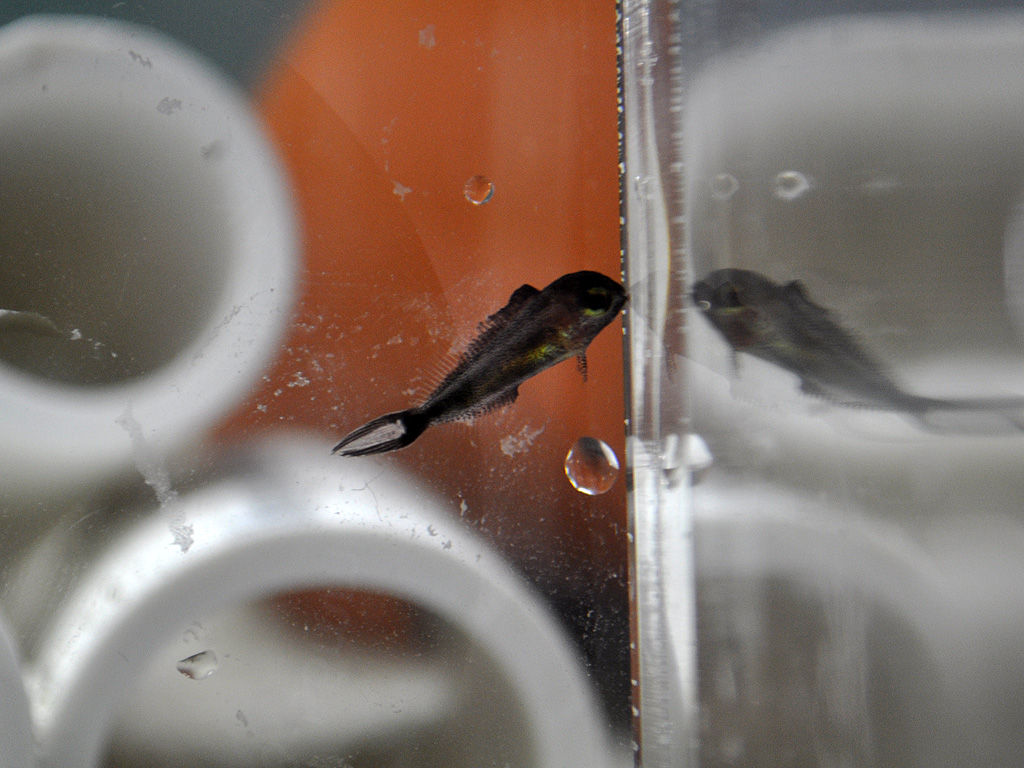
Are Captive-Bred Fang Blennies The Ideal Beginner Fish For All Reef Aquarists?
Aside from their ideal status as first breeding projects, I also happen to think that captive-bred Meiacanthus blennies make pretty accessible beginning fish for new marine and reef aquarists, and in the past have encouraged retailers I work with to consider them as a first offering.
Fangblennies are affordable, they are relatively peaceful, and tend to mix well with other fishes. While they don’t shoal quite like Anthias, they make an ideal captive-bred substitute for a fish that can be kept in a group and will swim in the open water.
While most people might start with an inexpensive pair of clownfish, in most circumstances the first pair is all you’re going to have in the tank. If you have an established clownfish pair in the average home aquarium, there are no options to add more clowns, and when it comes time to get that super pricey designer clown you were really wanting, but too hesitant to invest in as a beginning aquarist, you’re left with trying to find a home for your original clownfish! Fang blennies really won’t be a problem in that regard…you can always add more to the collection, particularly in a larger aquarium.
As a potential marine fish breeder, I view fishes like fang blennies, that can be kept in groups, as much more accessible to hobbyists, particularly with a little salesmanship and information. The normal ratio of 1 tank to 1 pair of clownfish doesn’t apply with the Mieacanthus and, for example, the vast majority of cardinalfishes, meaning it may be easier to match production with demand. Retail customers can buy more than 2 for their aquarium if they want.
While not quite as tough-as-nails as most captive-bred clownfish, and slightly more demanding due to their need for routine if not frequent feeding, overall, captive-bred fang blennies have a lot going for them and deserve far more attention than they tend to receive from hobbyists and retailers.
Meiacanthus Breeding, In Summary
Dr. Wittenrich included detailed breeding accounts for two species of fang blennies in his book; the Striped Fang Blenny (Meiacanthus grammmistes) and the Blackline Fang Blenny (M. nigorlineatus). Witternich recommends an aquarium as small as 15-20 gallons for a pair (1m/2f) or trio (1m/2f) of M. grammistes, with aquariums of 30-gallons or more for group spawning setups. I should point out that these not need to be the only fishes in the broodstock tanks; for example, a breeding pair or group of fang blennies could easily share the tank with a breeding pair of gobies or clownfishes.
Both species spawn frequently, and the time to hatch varies from 7 to 10 days depending on species and temperature; clutches may range from 50 to 200 eggs, which translates to manageable group sizes for small-scale breeding attempts.
Newly hatched fang blennies are reportedly a hair under 3 mm (M. grammistes) to 3.7 mm (M. nigrolineatus), and can begin feeding on rotifers immediately. While it may be possible to rear fang blennies in an aquarium with blacked-out sides, a black-round-tub type of rearing environment will likely produce better results.
Newly hatched brine shrimp can be added to the larval diet starting at around 10 days post-hatch. Given all the advancements in marine fish breeding since the 2007 publication, it is fair to suggest that modern breeding efforts may be rewarded if a breeder looks to incorporate copepods into the larval rearing diet. Transitioning larvae onto prepared diets, such as Reef Nutrition’s smallest-sized formulations of TDO, as soon as they’ll be accepted, may also help produce stronger larvae and juveniles with better survivorship and overall health.
Time to metamorphosis and settlement vary wildly within a batch of baby fang blennies. M. grammistes can settle as early as 15-20 days; M. nigrolineatus 20-25 days. That said, smaller, slower-growing specimens can take as long as 40 days to undergo settlement and show juvenile coloration (such as the individual Bundoon Blenny, M. bundoon, depicted above). Fang blennies must be fed heavily during this time, as larger juveniles have been known to cannibalize their smaller siblings. Or, you may wish to sort out the larger juveniles as they settle.
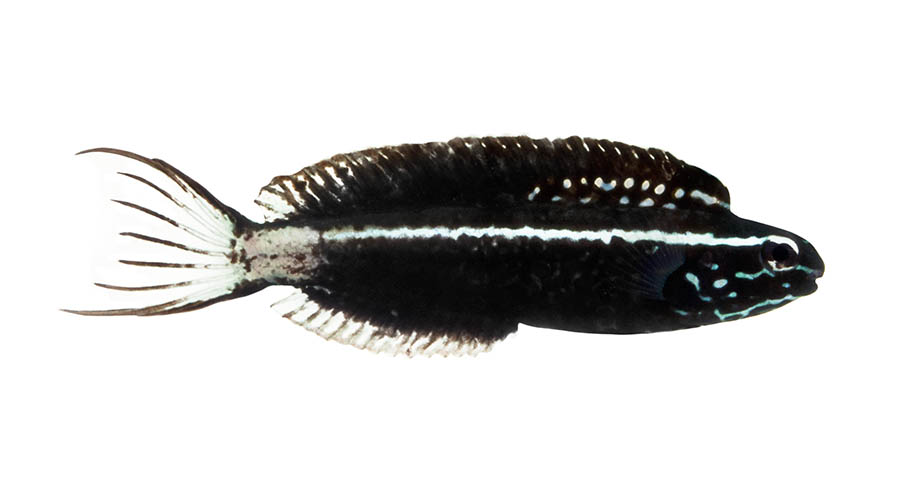
Recapping the Benefits of Choosing Meiacanthus as your First Marine Breeding Project
Comparing the breeding of Meiacanthus to the Banggai Cardinalfish? Truth be told, Banggai Cardinals, while presenting their own breeding challenges, are far too dissimilar to the vast majority of marine fish a hobbyist might try to breed. As mouthbrooders that produce large eggs and fry with no pelagic life stage (direct development), the skills we learn when rearing Banggai Cardinals don’t translate very well to the breeding and rearing of other marine ornamental fish.
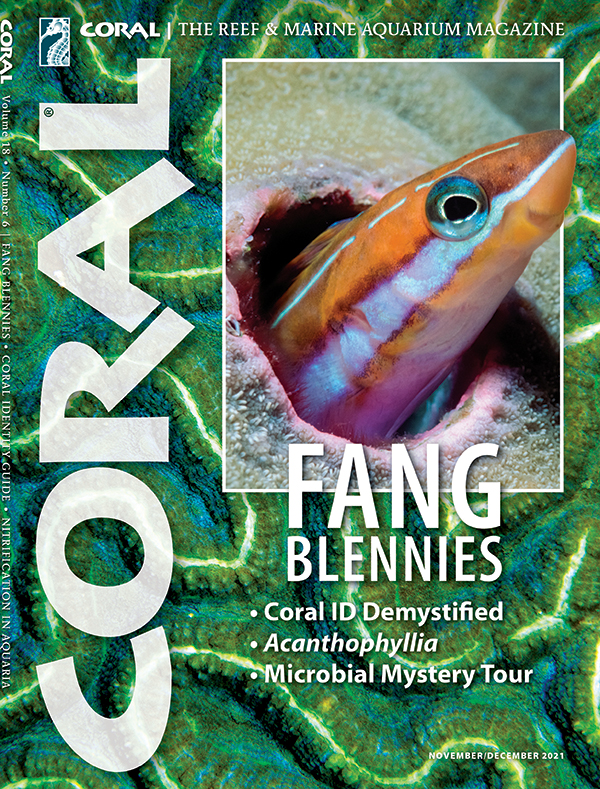
The largest differences between the breeding of fang blennies at home, when compared to clownfish, are that you’re dealing with slightly smaller larvae from the blennies and with what is usually a longer larval period. This will be good training for other easy-to-breed species such as some of the commonly available dottybacks (Pseudochromis spp), but also as you progress to ever more challenging projects. Conversely, you won’t have to necessarily wait months or years for your first spawn, either, as you might with clownfish, so you can quickly get to the breeding and rearing part of the project.
If you set up a group spawning aquarium with perhaps two males and two or more females of your selected Meiacanthus species, and you give them high-quality food and care, you should be rewarded with frequent, small clutches of eggs to work with. This means you can pick and choose when you want to try rearing a group of fish, rather than having to primarily allow the fish to dictate your breeding schedule.
With many captive-bred (CB) species available, these make ideal and affordable broodstock choices. ORA in Ft. Pierce, Florida, offers seven different CB Meiacanthus species, while BIOTA in Palau produces several in its growing inventory of cultured reef fishes. It may be wise to try to source broodstock from multiple commercial producers to impart some genetic diversity in the parental fish.
Avoid wild-caught broodstock, as they will present a significant challenge in terms of keeping them alive and healthy. Later, after you’ve had success with breeding, might be a better time to try to tackle some new, rare species of Meiacanthus should it enter the aquarium trade!
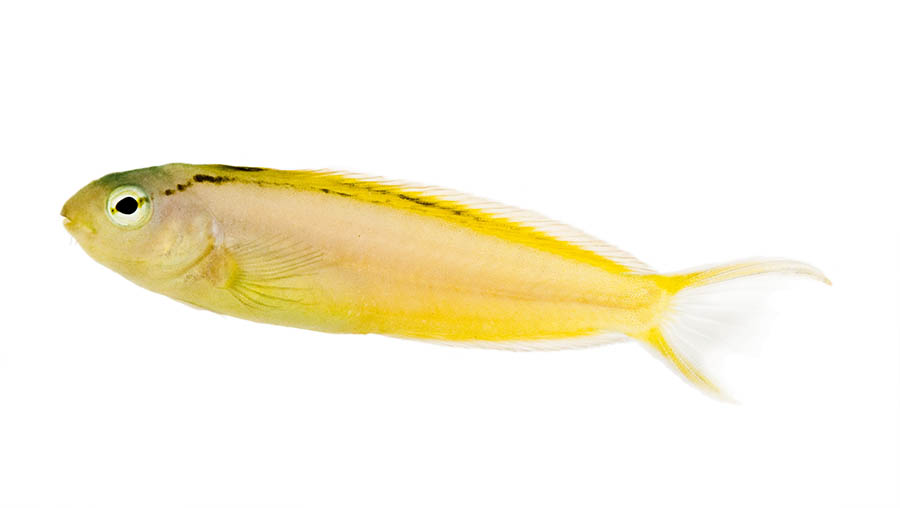
Ready to learn more? Grab a copy of FANG BLENNIES and pick out a species to try!
Meicanthus Captive-bred Blennies
ORA Farms
